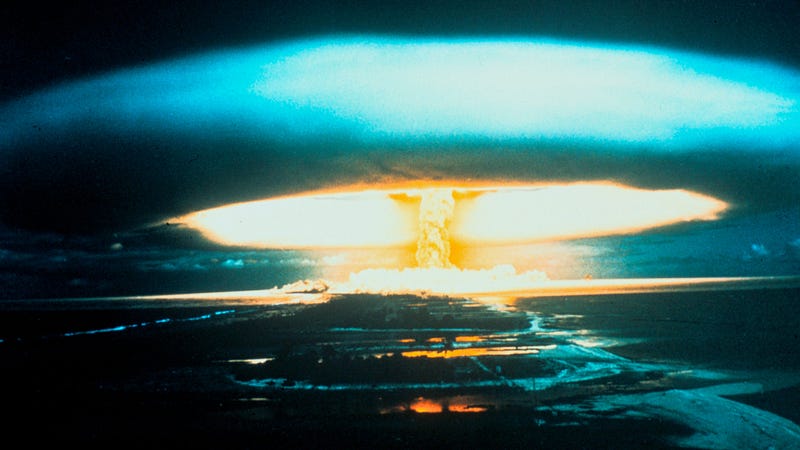The Cold War Technological Arms Race: Insights and Impact
Written on
Chapter 1: Overview of the Cold War Technological Rivalry
During the Cold War, a fierce technological contest emerged between the United States and the Soviet Union, influencing multiple sectors such as space exploration, nuclear weaponry, military might, and intelligence operations. This struggle for technological dominance had significant economic, political, and social ramifications, effects of which are still evident in contemporary science and technology. This article delves into the history and legacy of the technological rivalry between these two superpowers, assessing its various dimensions and the lessons it has imparted.

Chapter 1.1: The Rivalry Beyond Arms
The Cold War was characterized by a multifaceted rivalry that encompassed military, economic, and political arenas. However, its influence permeated technology and innovation as well. Both superpowers were dedicated to surpassing one another in scientific and engineering feats, which led to unprecedented achievements and a race to reach new frontiers. This technological contest left an indelible mark on global history, the repercussions of which are felt even today.
Chapter 1.2: The Cold War Context
The Cold War was defined by a complex political rivalry between the capitalist West, led by the United States, and the communist East, under Soviet leadership. This ideological conflict was marked by military build-up, political strife, and a battle of ideologies, establishing the framework for the technological competition that unfolded.
Chapter 2: The Space Race: Technological Showdown
The competition for supremacy in space stands out as one of the most significant aspects of the technological rivalry between the US and the Soviet Union. This space race transcended mere scientific achievement; it became a symbol of national pride and ideological confrontation.

Section 2.1: Early Milestones in Space Exploration
The launch of Sputnik, the first artificial satellite by the Soviet Union in 1957, sent shockwaves throughout the United States, marking the beginning of a new era in space exploration. This event demonstrated the Soviet Union's initial lead in the race.
Section 2.2: The Soviet Union's Pioneering Achievements
Following the success of Sputnik, the Soviet Union further solidified its position by sending the first human, Yuri Gagarin, into space in 1961, and later, the first woman, Valentina Tereshkova, in 1963. They also achieved milestones such as the first spacewalk and a successful soft landing on the moon.
Section 2.3: The United States' Counteroffensive
Determined to bridge the gap, the United States initiated the Apollo program, culminating in Neil Armstrong's historic moon landing in 1969. Additionally, the development of the Space Shuttle marked a new chapter in space exploration.
Chapter 3: The Impact and Legacy of the Space Race
The technological innovations spurred by the space race had extensive repercussions on science, engineering, and education. The moon landing became a profound symbol of national pride for the US, inspiring countless individuals in the fields of science and technology, while also demonstrating the US's capability to compete on a global stage.

Chapter 4: Nuclear Arms Race: A Shift in Global Security
The Cold War was also characterized by a nuclear arms race, fundamentally altering global politics and the balance of power.
Section 4.1: Development of Nuclear Capabilities
The United States developed the first atomic bomb during World War II, which significantly influenced the war's outcome. In response, the Soviet Union initiated its own nuclear weapons program, leading to an extremely precarious balance of power.
Section 4.2: The Soviet Nuclear Arsenal
The Soviet Union built a formidable nuclear arsenal, including intercontinental ballistic missiles (ICBMs) and nuclear submarines, as well as the "Dead Hand" system, a fail-safe mechanism designed to launch a nuclear strike automatically if Soviet leadership was incapacitated.
Section 4.3: The Race for Nuclear Supremacy
The competition between the US and Soviet Union escalated into a perilous arms race, resulting in the proliferation of nuclear arms globally and increasing the risk of catastrophic warfare.
Chapter 5: Military and Intelligence Technology Advances
Technological advancements were crucial for military and intelligence operations during the Cold War, with both superpowers engaging in covert operations and espionage that were enhanced by emerging technologies.
Section 5.1: Intelligence Gathering Technologies
Both nations leveraged advanced technologies for intelligence gathering and monitoring one another's activities, including the development of spy satellites and electronic surveillance systems.
Section 5.2: Military Technological Innovations
The arms race prompted both countries to innovate in military technologies, developing advanced weaponry, tanks, aircraft, and missile defense systems.
Section 5.3: Espionage Techniques
Innovations such as microfilm and hidden surveillance devices transformed espionage and covert operations. Notable espionage cases, such as the Cambridge Five and the Rosenbergs, highlighted the intense rivalry.
Chapter 6: Conclusions and Lessons from the Cold War Technological Competition
The technological rivalry between the US and Soviet Union was complex and multifaceted, yielding significant global consequences. The space race, nuclear arms race, and advancements in military and intelligence technology were crucial arenas for both superpowers, with enduring implications that continue to shape the world today.
Understanding the lessons derived from this historical context is vital for navigating contemporary challenges in science and technology. The Cold War era's emphasis on collaboration, the role of government in fostering innovation, and the dynamics of technological rivalry provide essential insights for future scientific endeavors.